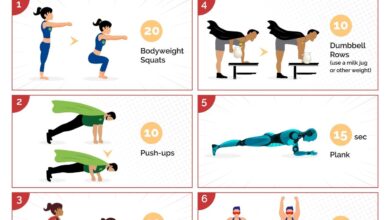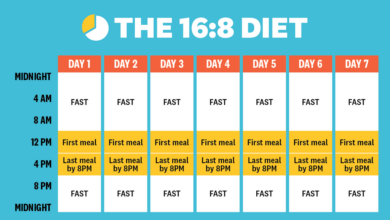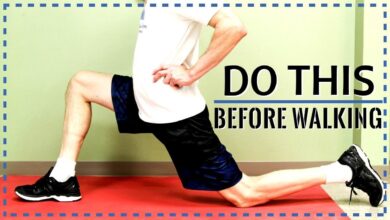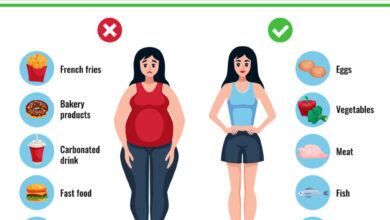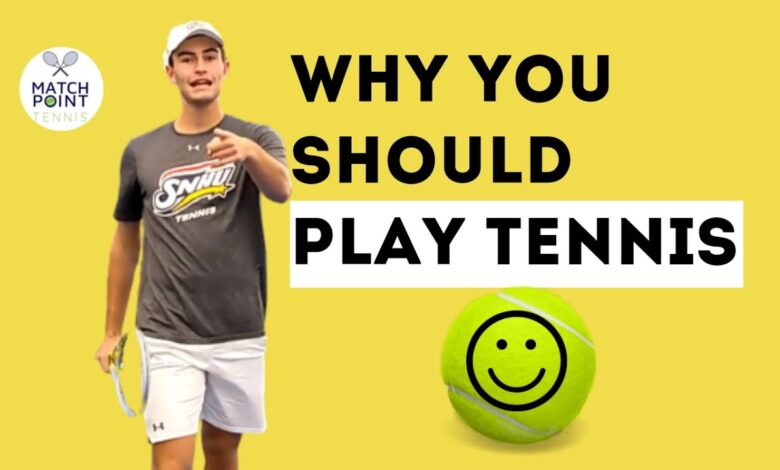
So You Want to Start Playing Tennis?
So you want to start playing tennis? It’s a fantastic choice! Tennis offers a unique blend of physical and mental challenges, making it a sport that can be enjoyed by people of all ages and abilities. Whether you’re looking for a fun way to stay active, a competitive outlet, or a chance to connect with others, tennis has something to offer everyone.
The beauty of tennis lies in its versatility. You can play casually with friends, join a league for competitive play, or even pursue a professional career. The sport demands strategic thinking, quick reflexes, and physical endurance, but it also rewards patience, persistence, and a positive attitude.
The Appeal of Tennis
Tennis is a sport that offers a unique blend of physical and mental challenges, making it a captivating and rewarding activity for people of all ages and abilities. From the exhilarating rallies to the strategic thinking required to outmaneuver your opponent, tennis provides a comprehensive workout that keeps you engaged both physically and mentally.
The Physical Benefits of Tennis
Playing tennis provides a full-body workout that improves cardiovascular health, muscular strength, and endurance. The constant movement and quick bursts of energy during rallies engage various muscle groups, strengthening the legs, core, arms, and shoulders. The repetitive motion of serving and returning the ball enhances hand-eye coordination and reflexes.
The Mental Benefits of Tennis
Tennis is a game of strategy and mental fortitude. Players must anticipate their opponent’s moves, analyze their own strengths and weaknesses, and maintain focus under pressure. The mental demands of the game improve concentration, decision-making skills, and emotional control.
The Social Aspects of Tennis
Tennis is a social sport that fosters friendships and connections. Whether you join a local club, play with friends, or participate in tournaments, tennis provides opportunities to meet new people and share a common passion.
The Competitive Nature of Tennis
For those who enjoy competition, tennis offers a challenging and rewarding environment. From local leagues to international tournaments, there are countless opportunities to test your skills and compete against others. The thrill of victory and the lessons learned from defeat contribute to the overall appeal of competitive tennis.
Examples of Tennis Enthusiasts
Many individuals have found enjoyment and fulfillment in playing tennis. For example, a recent study by the United States Tennis Association (USTA) found that over 90% of tennis players reported feeling happier and more relaxed after playing.
Getting Started
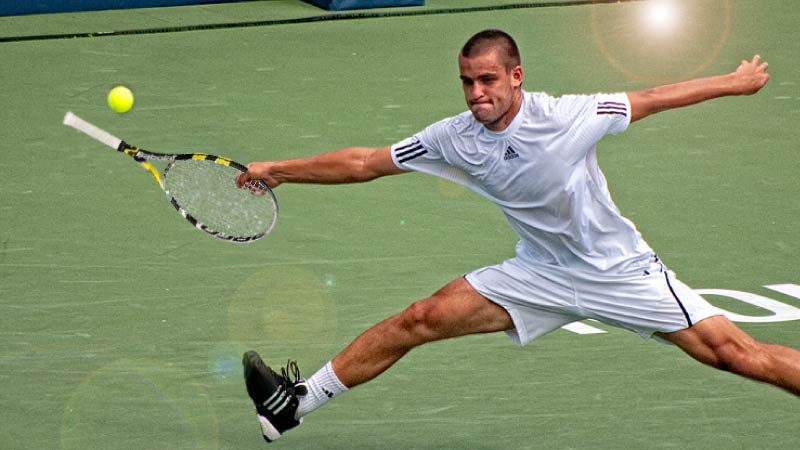
Stepping onto the court for the first time can be exciting, but it’s also important to have the right equipment to make your tennis journey enjoyable and safe. Here’s a guide to the essential gear you’ll need, from rackets to shoes, and how to choose the best options for you.
Choosing a Tennis Racket
Selecting the right tennis racket is crucial for comfort, control, and performance. Consider these factors:
- Weight:Lighter rackets are easier to swing, ideal for beginners or those seeking speed. Heavier rackets provide more power and stability. The average weight for a tennis racket is around 10-12 ounces (unstrung).
- Size:Racket head size affects the sweet spot, the area on the racket face where the ball can be hit with optimal control. Larger head sizes provide a bigger sweet spot, forgiving off-center hits, while smaller head sizes offer more precision and control.
- Grip:The grip size determines how comfortably you can hold the racket. A proper grip should allow you to comfortably hold the racket without straining your hand. Grip sizes are measured in inches, and most rackets come with interchangeable grip sizes.
So you want to start playing tennis? It’s a great way to get exercise and have fun, but it can also be a bit intimidating at first. Don’t worry, though, there are plenty of resources available to help you get started.
Once you’re feeling confident on the court, you’ll be ready to celebrate your wins with a delicious and healthy meal, like a sustainable seafood sushi bowl. These bowls are packed with protein and nutrients, and they’re a great way to refuel after a tough workout.
Just like tennis, there are many ways to customize your sushi bowl, so you can find the perfect combination for your taste. So go out there, hit the court, and then reward yourself with a delicious and sustainable sushi bowl!
Tennis Balls
Tennis balls are specifically designed for the game, with a felt covering that provides a consistent bounce. There are different types of tennis balls:
- Pressureless balls:These are ideal for beginners as they are softer and provide a gentler bounce. They are typically used for recreational play.
- Pressurized balls:These are the standard balls used in competitive tennis. They have a higher bounce and are more durable than pressureless balls.
Tennis Shoes
Tennis shoes are designed to provide support and stability on the court, with specific features to handle the quick movements and lateral movements involved in the sport:
- Sole:Tennis shoes have a herringbone pattern on the outsole for excellent grip and traction on hard courts. Some shoes also have a clay court version with a more open pattern for better grip on clay surfaces.
- Midsole:The midsole provides cushioning and support, absorbing impact and protecting your feet and ankles.
- Upper:The upper part of the shoe provides breathability and comfort, allowing your feet to stay cool and dry.
Tennis Clothing
Tennis clothing is designed for comfort and performance, allowing for freedom of movement and breathability:
- Shorts or Skirts:Lightweight and breathable shorts or skirts allow for ease of movement on the court.
- Shirts:Moisture-wicking shirts help keep you cool and dry, even during intense matches.
- Socks:Tennis socks provide cushioning and support for your feet, helping to prevent blisters and other injuries.
Finding Affordable and Quality Tennis Gear
There are many ways to find affordable and quality tennis gear:
- Online Retailers:Websites like Amazon, Tennis-Point, and Dick’s Sporting Goods offer a wide selection of tennis equipment at competitive prices.
- Local Sports Stores:Many local sports stores carry a range of tennis gear, and you can often find good deals on clearance items.
- Used Equipment:Consider buying used rackets or other equipment from online marketplaces like eBay or Craigslist. This can be a great way to save money, but make sure to inspect the equipment carefully before purchasing.
Finding Your Court
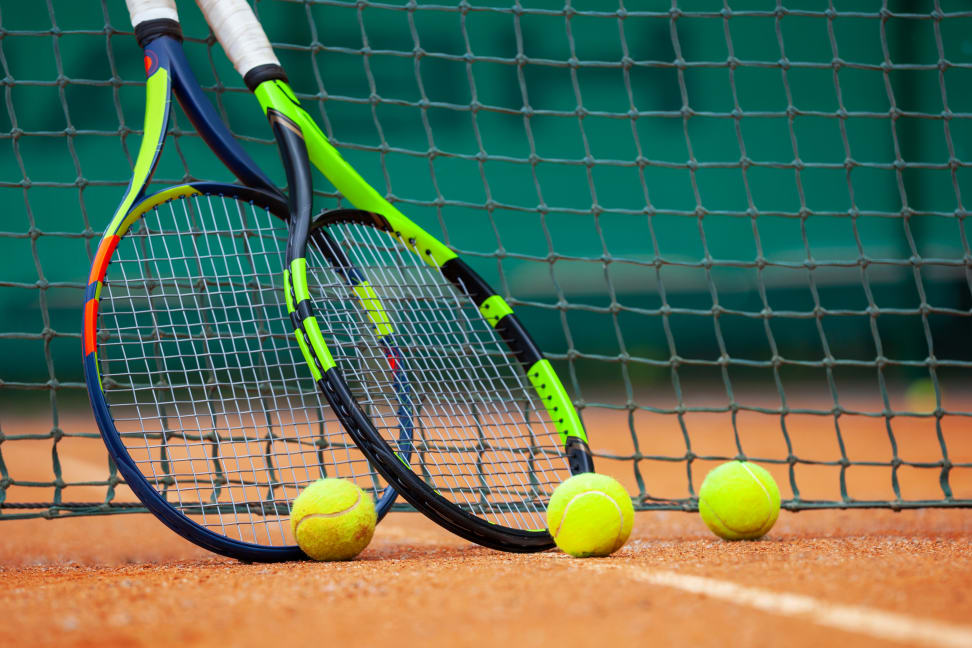
Once you’ve got the basics down, it’s time to hit the court! But where do you find one? There are a variety of options available, each with its own set of pros and cons. Let’s explore the different types of tennis courts and how to find the perfect one for you.
Public Parks
Public parks often offer free or low-cost access to tennis courts. This is a great option for beginners who are just starting out and want to try the sport without a significant financial commitment. Many parks also have public lighting, allowing for play during evening hours.
Pros:
- Cost-effective: Public courts are typically free or very affordable.
- Accessibility: Public parks are generally located in convenient areas and are easily accessible.
- Social Atmosphere: Public courts can be a great place to meet other players and socialize.
Cons:
- Court Quality: Public courts can sometimes be in poor condition, with uneven surfaces or worn-out nets.
- Crowds: Public courts can be crowded, especially during peak hours.
- Limited Amenities: Public courts often lack amenities like restrooms, water fountains, or pro shops.
Private Clubs
Private tennis clubs offer a more exclusive and luxurious experience. They often have well-maintained courts, professional coaching staff, and a range of amenities like locker rooms, restaurants, and social events.
Pros:
- High-Quality Courts: Private clubs typically have top-notch courts with excellent surfaces and lighting.
- Professional Coaching: Many clubs offer access to certified tennis coaches who can provide personalized instruction.
- Amenities: Private clubs often have a wide range of amenities, including locker rooms, showers, restaurants, and pro shops.
- Social Atmosphere: Private clubs provide a social environment where members can connect with other tennis enthusiasts.
Cons:
- Cost: Private clubs can be expensive, with membership fees and court fees.
- Limited Access: Membership at private clubs can be limited, with waiting lists or restricted hours.
Indoor Facilities
Indoor tennis facilities provide a climate-controlled environment for playing tennis year-round. They are a good option for players who want to avoid the elements or play during the winter months.
Pros:
- Year-Round Play: Indoor facilities allow for tennis play regardless of weather conditions.
- Climate-Controlled: Indoor courts provide a comfortable temperature and humidity, eliminating the need to worry about heat, cold, or rain.
- Amenities: Indoor facilities often have amenities like pro shops, locker rooms, and snack bars.
Cons:
- Cost: Indoor facilities are typically more expensive than public courts or private clubs.
- Limited Availability: Indoor courts can be in high demand, especially during peak hours.
Finding Tennis Courts in Your Area
There are several resources available to help you find tennis courts in your local area:
- Online Directories: Websites like “Tennis Courts Near Me” or “Find a Court” allow you to search for courts based on location, type, and availability.
- Community Websites: Local community websites and forums often have sections dedicated to tennis, where you can find information about local courts and players.
- Social Media: Groups and pages on social media platforms like Facebook and Instagram can be great resources for finding tennis courts and connecting with other players in your area.
- Local Parks and Recreation Departments: Contact your local parks and recreation department to inquire about public tennis courts and programs.
Mastering the Basics
Learning the fundamentals of tennis is crucial for any aspiring player. This section will guide you through the essential strokes, providing detailed instructions and tips for mastering each one.
The Forehand
The forehand is one of the most fundamental strokes in tennis. It is a powerful shot that is used to hit the ball when it is coming towards your dominant side. To execute a proper forehand, you need to adopt the correct grip, stance, and swing technique.
The continental grip is the most common grip for the forehand. This grip involves placing your hand on the racket handle with your index finger pointing directly down the handle, while your thumb is pointing towards the throat of the racket.
So you want to start playing tennis? It’s a fantastic choice! You’ll get a great workout, enjoy the fresh air, and make new friends. But before you hit the court, it’s important to fuel your body properly. Check out things to know about the plate diet for some helpful tips on how to eat healthy and maintain your energy levels.
With the right nutrition, you’ll be well on your way to becoming a tennis champ!
Your stance should be balanced and athletic, with your feet shoulder-width apart and your weight slightly forward. When the ball comes towards you, you should turn your body slightly towards the ball, keeping your knees bent and your back straight.
As the ball approaches, you should bring the racket back in a smooth arc, keeping your eye on the ball. The swing should be initiated with your hips and shoulders, and your arm should follow through smoothly.
- Practice drills:One effective drill for improving your forehand is to practice hitting balls against a wall. This allows you to focus on your swing technique without worrying about your opponent. You can also use a ball machine to practice hitting balls at different speeds and angles.
- Consistency and accuracy:The key to a good forehand is consistency and accuracy. Aim to hit the ball cleanly and consistently, and focus on placing the ball where you want it to go.
The Backhand
The backhand is another essential stroke in tennis. It is used to hit the ball when it is coming towards your non-dominant side. Mastering the backhand requires a different grip and swing technique compared to the forehand. The most common grip for the backhand is the semi-western grip.
This grip involves placing your hand on the racket handle with your index finger pointing towards the 1 o’clock position, while your thumb is pointing towards the throat of the racket. Your stance for the backhand should be similar to your forehand stance, with your feet shoulder-width apart and your weight slightly forward.
As the ball approaches, you should turn your body slightly towards the ball, keeping your knees bent and your back straight. The backhand swing should be initiated with your hips and shoulders, and your arm should follow through smoothly.
- Practice drills:One effective drill for improving your backhand is to practice hitting balls against a wall, focusing on your swing technique. You can also use a ball machine to practice hitting balls at different speeds and angles.
- Consistency and accuracy:As with the forehand, consistency and accuracy are crucial for a good backhand. Aim to hit the ball cleanly and consistently, and focus on placing the ball where you want it to go.
The Serve
The serve is the most important shot in tennis, as it gives you the opportunity to start the point. A strong serve can put your opponent on the defensive and give you an advantage.The continental grip is the most common grip for the serve.
This grip involves placing your hand on the racket handle with your index finger pointing directly down the handle, while your thumb is pointing towards the throat of the racket. To execute a proper serve, you should start with your feet shoulder-width apart and your weight slightly forward.
As you toss the ball in the air, you should take a backswing with your racket, keeping your eye on the ball. As the ball reaches its peak, you should bring the racket forward and hit the ball with a strong, downward motion.
- Practice drills:One effective drill for improving your serve is to practice serving against a wall. This allows you to focus on your swing technique and ball toss without worrying about your opponent. You can also use a ball machine to practice serving at different speeds and angles.
- Consistency and accuracy:The key to a good serve is consistency and accuracy. Aim to hit the ball cleanly and consistently, and focus on placing the ball where you want it to go.
The Volley
The volley is a shot that is hit before the ball bounces. It is often used at the net, where players can react quickly to their opponent’s shots. The continental grip is the most common grip for the volley. This grip involves placing your hand on the racket handle with your index finger pointing directly down the handle, while your thumb is pointing towards the throat of the racket.
Your stance for the volley should be balanced and athletic, with your feet shoulder-width apart and your weight slightly forward. As the ball approaches, you should turn your body slightly towards the ball, keeping your knees bent and your back straight.
The volley swing should be short and compact, with the racket head moving in a straight line towards the ball.
- Practice drills:One effective drill for improving your volley is to practice hitting balls against a wall. This allows you to focus on your swing technique and footwork without worrying about your opponent. You can also use a ball machine to practice volleying at different speeds and angles.
- Consistency and accuracy:The key to a good volley is consistency and accuracy. Aim to hit the ball cleanly and consistently, and focus on placing the ball where you want it to go.
Building Your Game: So You Want To Start Playing Tennis
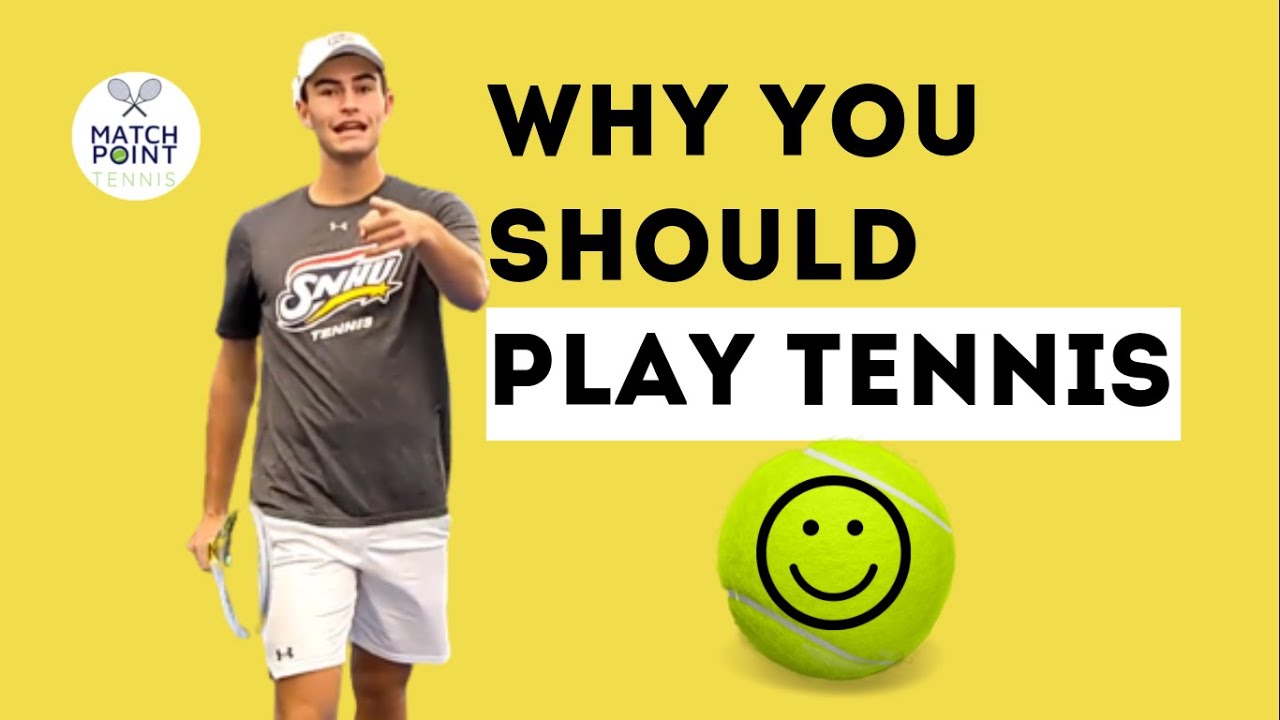
Beyond the basic strokes, tennis offers a rich tapestry of shots and strategies that elevate your game to new heights. This section delves into the world of advanced techniques, exploring how to master different shot types and develop your court awareness.
Advanced Shots and Strategies
Developing a repertoire of advanced shots expands your offensive and defensive options, adding unpredictability to your game.
- Lob: This high-arcing shot, played over your opponent’s head, buys you time to recover or set up a follow-up shot. Lobs are particularly effective when your opponent is at the net, forcing them to scramble back.
- Drop Shot: A delicate shot played softly and close to the net, a drop shot catches your opponent off guard, forcing them to rush to the net to retrieve the ball.
- Slice Shot: This shot is played with a sideways motion of the racquet, producing a low, flat trajectory that can be used to control the ball’s bounce and direction. Slice shots are often employed to create angles and disrupt your opponent’s rhythm.
So you want to start playing tennis? It’s a great way to get exercise and have fun, but you’ll need to fuel up for those long rallies! Try a delicious and nutritious pre-game meal like this vegan super greens tomatillo posole for a boost of energy and antioxidants.
You’ll be ready to hit the court in no time!
Court Positioning and Footwork
Efficient court positioning and footwork are paramount in tennis, enabling you to react quickly and reach the ball effectively.
- Baseline Positioning: When positioned at the baseline, players should stand with their feet shoulder-width apart, weight balanced, and racquet ready to strike.
- Footwork for Movement: The key to efficient footwork is a combination of agility and speed. Players should use a combination of quick steps, lunges, and crossovers to cover the court effectively.
Drills and Exercises, So you want to start playing tennis
Regular practice and drills are essential for improving stamina, reflexes, and overall court awareness.
- Agility Drills: Agility drills, such as ladder drills and cone drills, enhance your quickness and footwork, enabling you to move around the court with greater efficiency.
- Reaction Drills: Reaction drills, such as ball-toss drills and reflex drills, improve your hand-eye coordination and reaction time, allowing you to respond more effectively to your opponent’s shots.
- Stamina Building: Interval training, sprints, and endurance exercises are crucial for building stamina, allowing you to maintain a high level of energy throughout a match.
Playing with Others
Tennis is a social sport, and playing with others can greatly enhance your enjoyment of the game. It provides opportunities to meet new people, improve your skills, and experience the thrill of competition. Finding the right partners and joining a league or club can elevate your tennis journey to new heights.
Finding Tennis Partners
Finding tennis partners can be as simple as asking friends and family if they’re interested in playing. However, there are several other avenues to explore:
- Online Platforms:Websites and apps dedicated to connecting tennis players, such as Meetup.com, provide a platform to search for players based on your skill level, location, and availability.
- Local Tennis Clubs:Many tennis clubs offer social events and organized play, which are excellent opportunities to meet fellow players.
- Community Events:Check local newspapers, community centers, and online event calendars for tennis tournaments, clinics, and other events where you can connect with players.
- Tennis Courts:Visit local public tennis courts and strike up conversations with players. Many are happy to welcome newcomers and find a partner for a friendly match.
Joining a Tennis League or Club
Joining a tennis league or club can provide a structured environment for playing and improving your game.
- Social Interaction:Tennis leagues and clubs offer a social aspect, allowing you to connect with players of similar skill levels and interests.
- Competitive Play:League play provides a structured environment for competition, helping you track your progress and improve your game through regular matches.
- Coaching Opportunities:Many leagues and clubs offer coaching services, providing valuable insights and guidance to enhance your skills.
- Structured Play:League play provides a schedule for matches, ensuring regular practice and keeping you motivated.
Tennis Match Formats
Tennis matches can be played in various formats, each offering a unique experience:
- Singles:A one-on-one match between two players.
- Doubles:A match between two teams of two players each.
- Mixed Doubles:A doubles match with one male and one female player on each team.
Enjoying the Journey
Tennis is a lifelong sport that can be enjoyed at any level. It’s not just about winning matches; it’s about the journey of learning, improving, and connecting with others on the court. To make the most of your tennis experience, it’s essential to embrace the process of growth and set realistic goals that keep you motivated.
Setting Realistic Goals
Setting realistic goals is crucial for staying motivated and enjoying the learning process. Avoid setting goals that are too ambitious or unattainable. Instead, focus on small, achievable steps that will help you progress gradually. Here are some tips for setting realistic goals:* Start with the basics:Focus on mastering the fundamental skills like serving, returning, and groundstrokes before moving on to more advanced techniques.
Set specific and measurable goals Instead of saying “I want to improve my backhand,” try “I want to hit 10 consistent backhands in a row during practice.”
Break down big goals into smaller steps If your goal is to play in a tournament, start by setting smaller goals like improving your serve or practicing specific strategies.
Be patient and consistent Progress in tennis takes time and effort. Don’t get discouraged if you don’t see results immediately. Keep practicing and stay committed to your goals.
Tracking Your Progress
Tracking your progress can be a powerful motivator and help you identify areas for improvement. You can track your progress in several ways:* Keep a tennis journal:Record your practice sessions, matches, and any insights you gain about your game.
Use a tennis app Many apps track your stats, provide feedback, and offer training plans.
Video yourself playing Watch your videos to identify areas for improvement and track your progress over time.
Seek feedback from a coach or experienced player Get an objective perspective on your game and identify areas that need attention.
Finding Coaches and Clinics
Having a coach can significantly accelerate your learning and help you develop your game more efficiently. Coaches can provide personalized instruction, identify weaknesses, and offer strategies for improvement.Here are some resources for finding coaches and clinics:* Local tennis organizations:Most cities have tennis clubs or organizations that offer coaching services and clinics.
Online platforms Websites like Tennis-Point and Universal Tennis offer coaching directories and online lessons.
Word-of-mouth Ask friends, family, or fellow players for recommendations.
Embrace the Learning Process
Tennis is a journey, not a destination. There will be ups and downs along the way, but it’s essential to embrace the learning process and celebrate your achievements, no matter how small. Here are some tips for enjoying the journey:* Focus on the process, not the outcome:Enjoy the challenge of learning new skills and improving your game.
Don’t be afraid to make mistakes Mistakes are a part of the learning process. Use them as opportunities to learn and grow.
Celebrate your successes Acknowledge your progress and celebrate your achievements, big or small.
Have fun Remember why you started playing tennis in the first place. Enjoy the camaraderie, the competition, and the feeling of hitting a good shot.
Conclusive Thoughts
Embarking on your tennis journey is an exciting adventure filled with learning, growth, and endless possibilities. Remember, consistency and dedication are key to improvement. Don’t be afraid to embrace the challenges and celebrate the victories, big or small. With each stroke, you’ll not only develop your skills but also discover the joy and fulfillment that comes with playing a sport that truly tests your limits and inspires you to reach for your potential.

